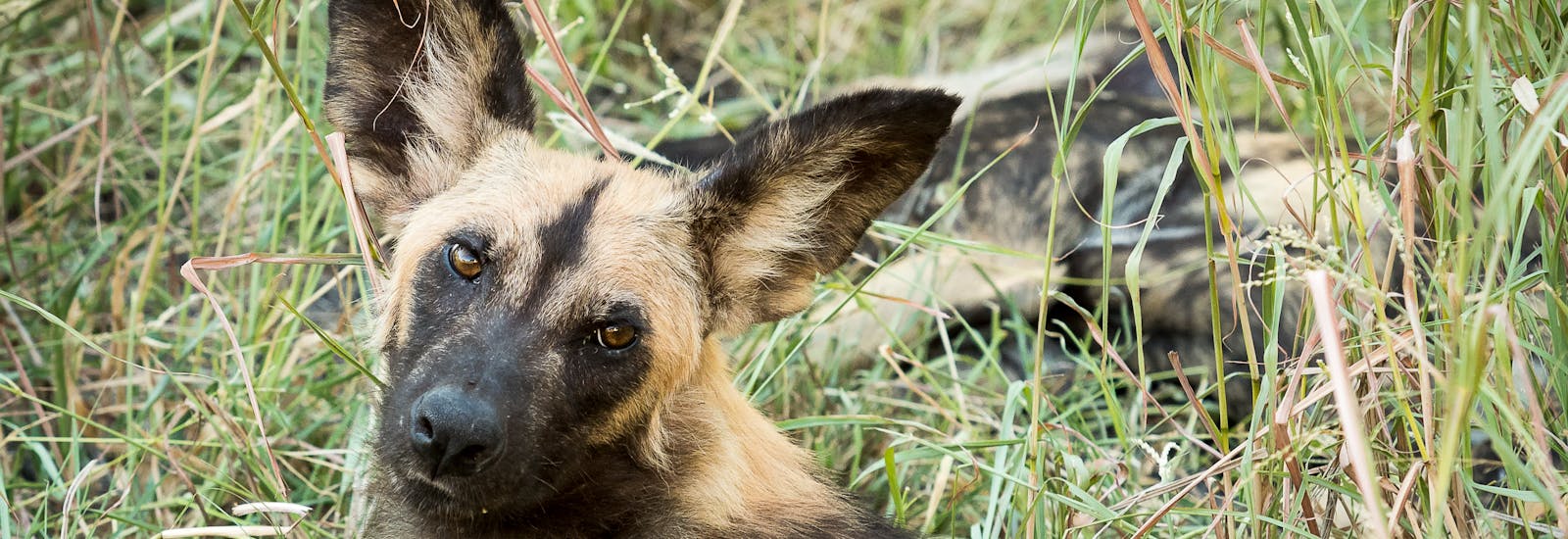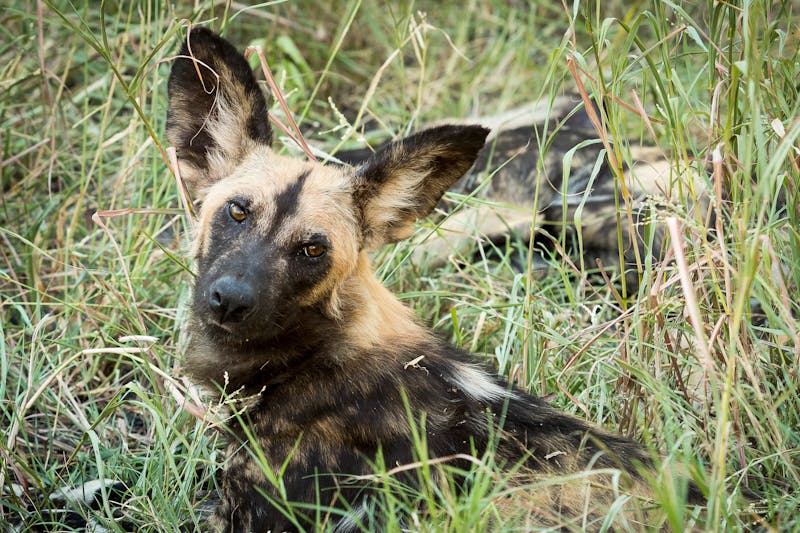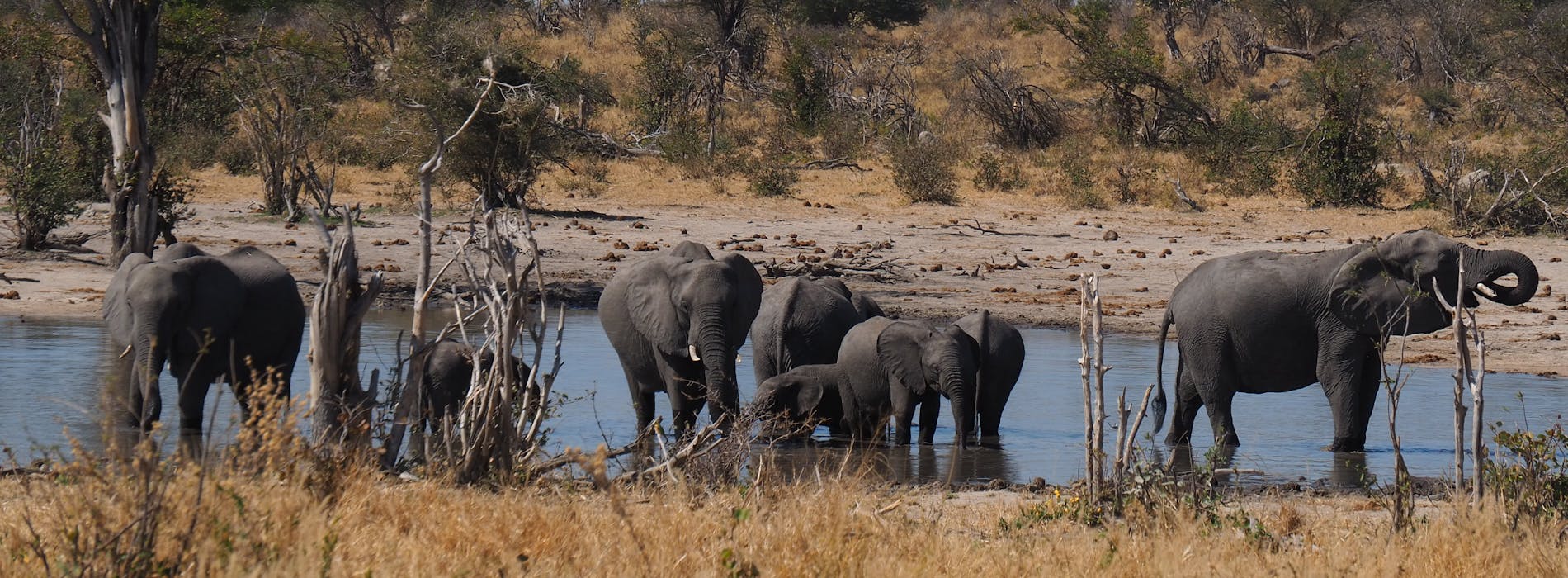
Interesting facts on African wild dogs (Infographic)
The African wild dog goes by various names, reflecting its widespread distribution across Africa, including open plains and sparse woodlands of Sub-Saharan Africa. The most common names for this species are painted dog, African spotted dog, painted wolf, and Cape hunting dog.
People often judge painted dogs by their appearance, but there’s much more to this endangered animal than meets the eye. Their irregular fur patterns can make them seem unclean and unkempt, and their tendency to live and travel in packs can make them appear aggressive and confrontational. However, perception shouldn’t always be believed.
African painted dogs are known as incredibly social animals who are devoted to teamwork within their pack. They form strong bonds, showing care and support to pack members who may be ill or weak. Advanced communication and a complex social structure help them in all aspects of life, like finding food, knowing family roles, and staying safe.
When raising African wild dog pups, the pack engages in cooperative breeding. The rest of the pack works together to guard, feed, and foster the young. They also ensure the development of the social and hunting skills of the pups.
Despite their will to work together and survive, African wild dogs face threats such as habitat fragmentation, viral diseases, and habitat and prey loss to larger predators like lions. Human-wildlife conflict accounts for almost half of all wild dog deaths. This is often due to the misplaced belief that wild dogs are targeting livestock, even though this has been proven to be extremely uncommon in multiple studies. These factors, among others, have resulted in wild dogs being listed as an endangered species by the IUCN.
If we are to save this iconic species, they will need support from conservation projects.
This infographic shares fun facts about African wild dogs and how you can help support their species in Africa.
African wild dog facts

Volunteer with African wild dogs
At African Conservation Experience, we help with conservation projects that aim to increase the African hunting dog population. Read about our different African wild dog conservation projects here!
One of these projects is the Okavango Wilderness Experience in Botswana. Here you can monitor iconic African species such as lions, elephants, and cheetahs, as well as help conserve one of the last strongholds of the African painted dog. You will learn different ways to collect data on wildlife, such as using line transects, camera traps, and surveys, while getting to experience incredible animal encounters.
This project is partnered with Okavango Research Institute (ORI) and longtime Okavango Delta expert Dr Christiaan Winterbach, promising impactful collaboration for lasting conservation effects on the ecosystem.

Read the stats from the African painted dog facts infographic below!
Wild Dog Fact Sheet
The African wild dog is one of the world’s most endangered mammals and can be identified by its long legs and irregular fur patterns. Wild dogs live in packs and are extremely social and are known to help other members of the pack when weak or ill. The same goes for hunting, with up to 20 working together. Once mature, males stay with their original pack while females generally seek a new group.
Status: Endangered
Population: Estimated 6,600
Scientific name: Lycaon Pictus
Size (Adult): 30in height, 30-56in length
Weight (Adult): 40-70lbs
Max speed: Up to 44mph
Habitat: Deserts, forests and grasslands – all parts of the savannah biome
Where are African Wild Dogs found?
They roam around a lot and have expansive areas to live in. In the Serengeti, each pack has a territory of about 900 square miles. You can typically find the painted dog in:
- Angola
- Benin
- Botswana
- Burkina Faso
- Central African Republic
- Chad
- Ethiopia
- Kenya
- Malawi
- Mozambique
- Namibia
- Niger
- Senegal
- South Africa
- South Sudan
- Tanzania
- Zambia
- Zimbabwe
Did you know?
- African wild dog packs have an 80% success rate when hunting, thanks to high levels of communication.
- African wild dogs generally live up to the age of 11 when living in the wild.
- The African wild dog can run up to 44mph — the same as a greyhound!
- The African wild dog has incredible hearing, with muscles allowing its large rounded ears to swivel.
- The African wild dog's loyalty to its pack and habitat prevents humans from domesticating it.
- Wild dogs use abandoned underground warthogs and porcupine dens to give birth.
- Feeding priority is given to wild African dog puppies over dominant pack members.
- Following an African wild dog hunt, individuals will regurgitate meat for any pups in their litter.

